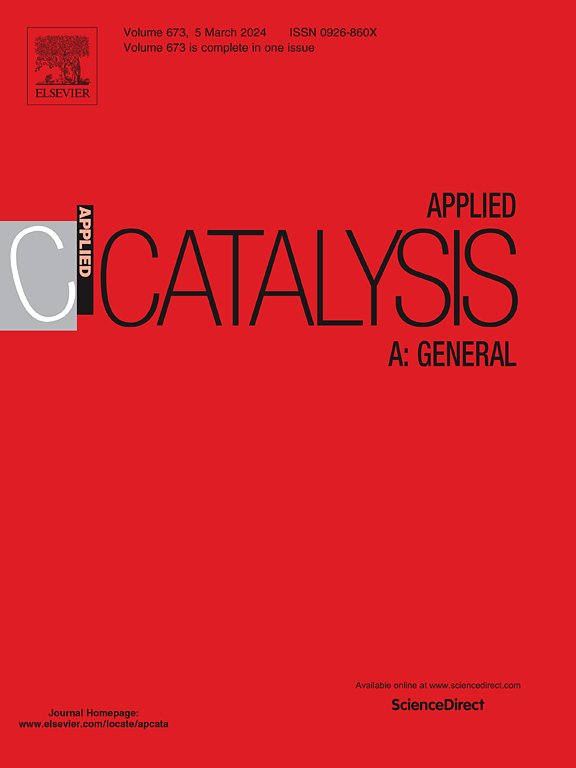一项比较研究提出了输送工业二氧化碳到甲酸电转化的性能基准
IF 4.7
2区 化学
Q2 CHEMISTRY, PHYSICAL
引用次数: 0
摘要
选择合适的电催化基准可以大大提高电催化剂的设计,更好地评估其性能和潜在的应用。然而,缺乏标准化的电催化基准,将实验室创新与工业实施联系起来,阻碍了ph通用的二氧化碳到甲酸转换系统的发展,以满足工业级电流密度(>;200 mA cm-2),法拉第效率(FE >;90 %),长期稳定。本文通过对商业铋基化学品(金属、氧化物、盐)用于CO2电还原的系统评估,我们证明了铋盐(例如Bi(NO3)3)作为材料开发的前体,可以成为所有pH条件(酸性、中性和碱性)下的通用性能基准。具体来说,在各种生产甲酸盐的电解环境中,这些铋盐涂层电极通常具有超过90 %的FE,大电流密度,低起始电位和潜在的操作稳定性。此外,与In/Sn/Pb类似物的比较分析深刻地阐明了铋盐在促进co2到甲酸电转化方面的一般基准可行性。本研究建立了一种针对甲酸盐的电催化材料的筛选范例,可以评估和指导工业规模可持续甲酸盐生产的实用CO2电催化剂的设计。本文章由计算机程序翻译,如有差异,请以英文原文为准。
A comparative study proposing performance benchmarks for convoying industrial CO2-to-formate electroconversion
Selecting suitable electrocatalytic benchmarks can greatly enhance electrocatalyst design and better assess their performance and potential applications. However, the absence of standardized electrocatalytic benchmarks bridging laboratory innovation to industrial implementation hinders the development of pH-universal CO2-to-formate conversion systems that meet industrial-grade current densities (> 200 mA cm–2), Faradaic efficiencies (FE > 90 %), and long-term stability. Herein, through a systematic evaluation of commercial bismuth-based chemicals (metal, oxide, salts) for CO2 electroreduction, we demonstrated that bismuth salts (e.g., Bi(NO3)3) as precursors for material development, can emerge as the universal performance benchmarks across all pH conditions (acidic, neutral, and alkaline). Concretely, in various electrolytic environments for formate production, these bismuth salts-coated electrodes generally exhibit exceeding 90 % FE, large current densities, low onset potentials and potential operational stability. Moreover, a comparative analysis with In/Sn/Pb analogues profoundly elucidates the general benchmarking feasibility of bismuth salts in facilitating CO2-to-formate electroconversion. This work establishes a screening paradigm of formate-targeted electrocatalytic materials, which can assess and guide the design of practical CO2 electrocatalysts for sustainable formate production at industrial scales.
求助全文
通过发布文献求助,成功后即可免费获取论文全文。
去求助
来源期刊

Applied Catalysis A: General
化学-环境科学
CiteScore
9.00
自引率
5.50%
发文量
415
审稿时长
24 days
期刊介绍:
Applied Catalysis A: General publishes original papers on all aspects of catalysis of basic and practical interest to chemical scientists in both industrial and academic fields, with an emphasis onnew understanding of catalysts and catalytic reactions, new catalytic materials, new techniques, and new processes, especially those that have potential practical implications.
Papers that report results of a thorough study or optimization of systems or processes that are well understood, widely studied, or minor variations of known ones are discouraged. Authors should include statements in a separate section "Justification for Publication" of how the manuscript fits the scope of the journal in the cover letter to the editors. Submissions without such justification will be rejected without review.
 求助内容:
求助内容: 应助结果提醒方式:
应助结果提醒方式:


